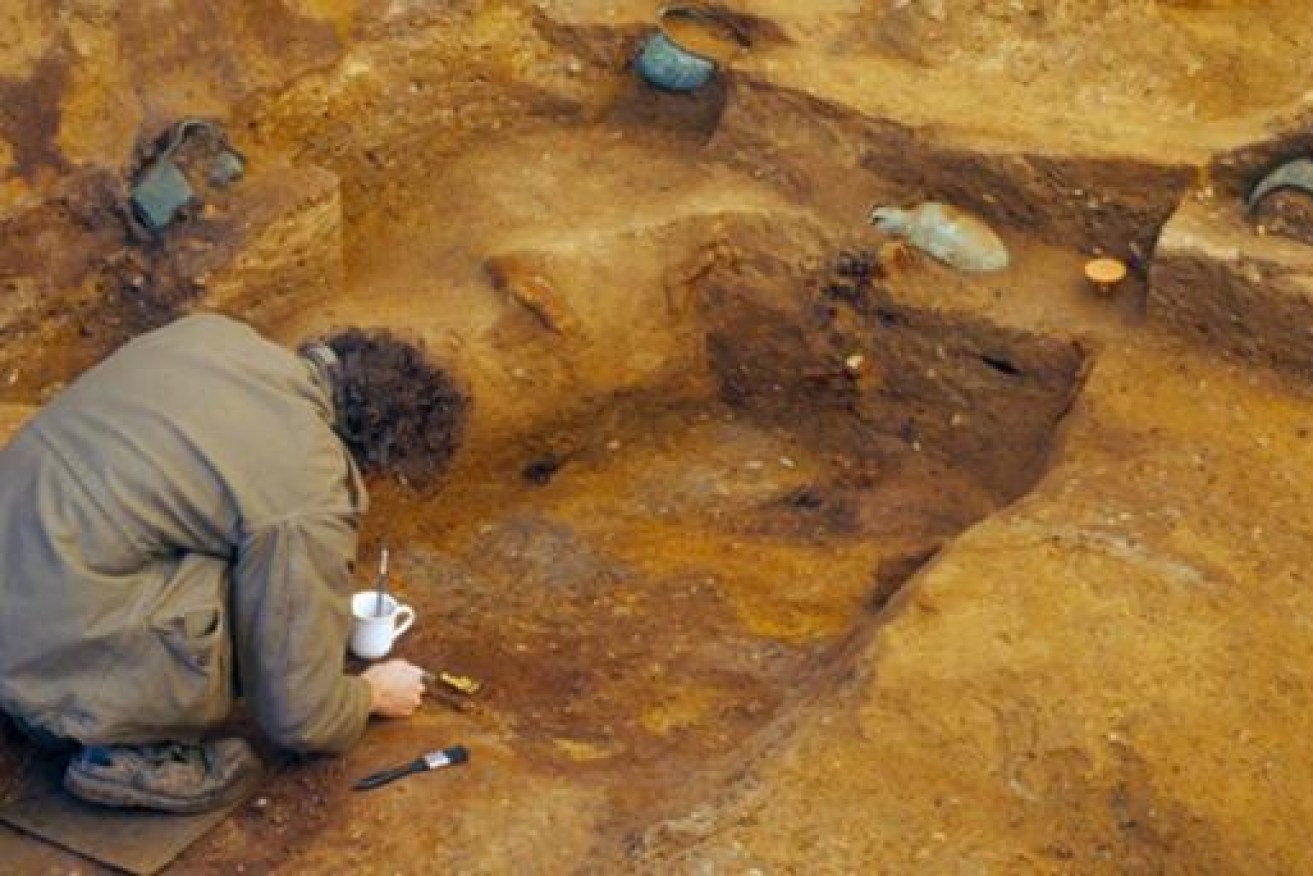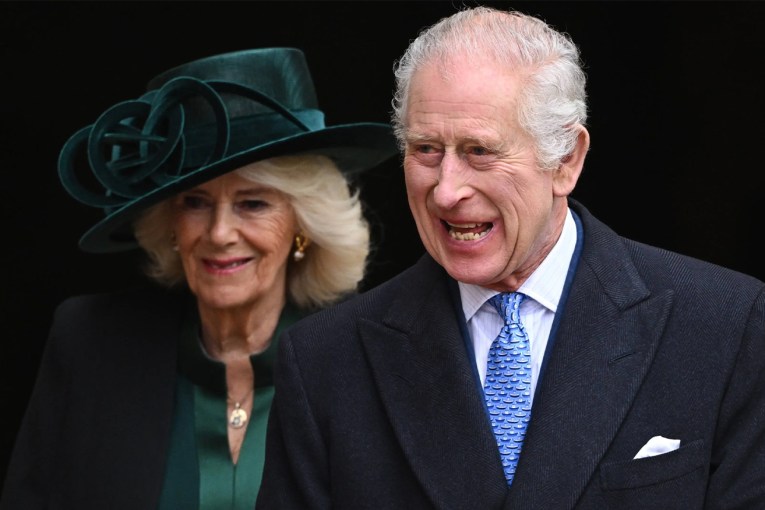A millennium-old grave in England likened to Pharaoh’s tomb


The Prittlewell burial site was discovered in 2003. Photo: Museum of London Archaeology
Archaeologists say a millennium-old burial site stumbled upon by road workers is the British equivalent of King Tutankhamun’s tomb.
The underground chamber was discovered in 2003, in between a pub and an Aldi supermarket outside Prittlewell in Essex by workers widening a road.
In the years since, it and its contents have been put under the microscope by a team of 40 experts.
The fresh details they have uncovered have led the experts to think the find might be the site of Britain’s earliest Christian royal burial – making it the most important Anglo-Saxon discovery in 70 years.

The Prittlewell burial site believed to be that of Seaxa, brother of Saxon King Saebert. Photo: Museum of London Archaeology
The 1400-year-old tomb was replete with about 40 luxury goods and precious artefacts from across the world.
Among the items recovered were a golden belt buckle, the remnants of a harp-like instrument known as a lyre, gleaming glassware and an elaborate water vessel.
“There are luxury imports that have come from as far away as Syria. Some of the raw materials might have even come as far away as Sri Lanka and the Indian subcontinent,” said Liz Barham, a senior conservator at Museum of London Archaeology who worked on the dig.
“This is a really rich burial. It’s a statement, it’s a theatrical statement being made about the family, about this person.”

Gold crosses believed to have been placed over the man’s eyes. Photo: Museum of London Archaeology
Archaeologists also found a painted wooden box, which housed coins, drinking horns, wooden vessels and a golden buckle.
The contents suggest the tomb, which was about four metres square and 1.5 metres deep, most likely belonged to a member of royalty.
There were also two small gold-foil crosses at the head of the coffin, leading the experts to believe the unknown occupant – nicknamed the “Prittlewell Prince” – must have received a Christian burial.
The only human remains found were fragments of tooth enamel. But they were enough to enable archaeologists to reveal the occupant was more than six years old.

A reconstruction sketch of the 1400-year old Anglo-Saxon burial chamber. Photo: Museum of London Archaeology
The size of the coffin also suggests he was 1.73 metres tall, the average height for an Anglo-Saxon male at the time.
The Museum of London Archaeology’s director of research and engagement, Sophie Jackson, said experts’ “best guess” was that the tomb belonged to Seaxa. He was the brother of King Saebert, the first Anglo-Saxon king to convert to Christianity.
Each item had been placed within the tomb “as part of a carefully choreographed burial rite” during a time when Christianity first arrived in Pagan Britain, Ms Jackson said.
“They would have been just on the transition between having pagan burials with all your gear, but also having these crosses,” Ms Jackson said.

Objects found at the Prittlewell burial site include a gold belt buckle, a copper alloy flagon from the Mediterranean, a decorative hanging bowl, and gold coins. Photo: Museum of London Archaeology
She said the discovery could be seen as a “British equivalent to Tutankhamun’s tomb, although different in a number of ways”.
The riches buried alongside the man will go on permanent display for the first time at Southend Central Museum, near the burial site and about 60 kilometres east of London.
-with agencies








